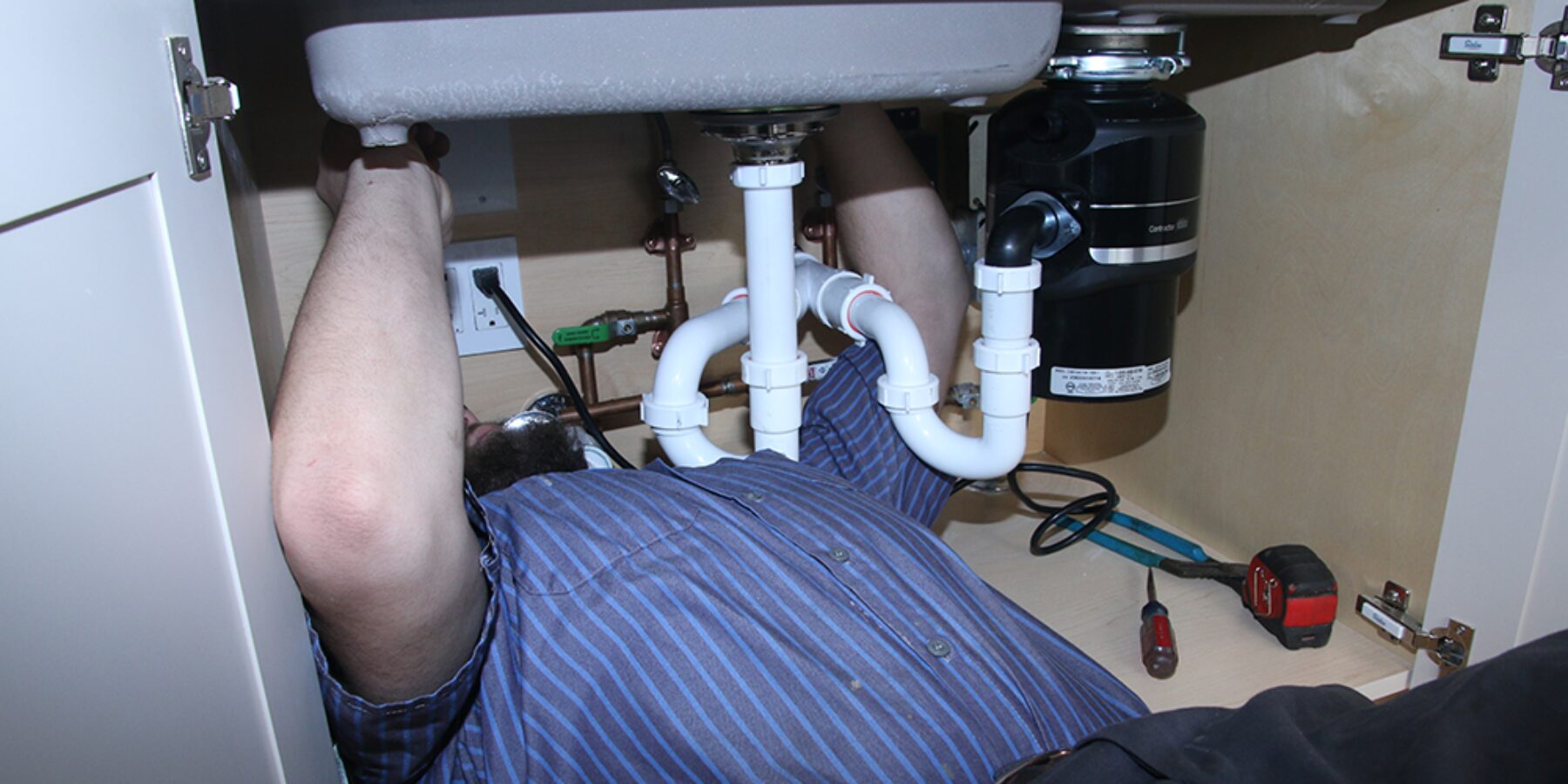Nearly everybody has got their unique idea when it comes to 7 Ways To Fix A Slow-Draining Sink Before You Call A Plumber.

Introduction
We have actually all been there: You're cleaning your teeth or washing your hands, and you see the water merging in the sink. Rather than promptly swirling down the tubes, it sticks around, turning your once-refreshing early morning regimen into a mini overload scene. A slow-draining sink isn't just bothersome; it's commonly an indication of larger pipes concerns prowling underneath the surface. Fortunately is that the majority of slow-draining sinks can be fixed with a little know-how, a few basic tools, and some persistence. All set to tackle this project head-on? Let's roll up our sleeves and dive right in.
Comprehending the Root Causes Of a Slow-Draining Sink
Before you start poking around in your pipelines, it aids to understand what could be triggering the slowdown. Understanding the source makes it simpler to pick the ideal repair.
Devices and Products You'll Need
The right tools make all the difference. Luckily, you will not need a fully equipped plumbing professional's van to get the job done.
Step-by-Step Guide to Repairing a Slow-Draining Sink
Currently, let's get involved in the nitty-gritty. This step-by-step process will assist you with straightforward techniques to recover your sink's drainage.
Step 1: Eliminate and Clean the Stopper
Typically, the stopper (that little plug you push down to obstruct water) is the very first culprit. Remove it very carefully and clean off any kind of hair or crud trapped around its base. Rinse it thoroughly before placing it back in place.
Action 2: Utilize a Bettor to Remove Particles
Got that bettor all set? Placement it over the drain and offer it a couple of company pumps. The concept is to develop suction that can loosen up any obstruction. If you see littles debris drifting up, you're on the ideal track.
Action 3: Attempt a Drain Snake or Cable Hanger
If the bettor doesn't do the trick, it's time to bring out the drainpipe snake. Delicately feed it into the drainpipe and spin as you go. You may feel some resistance-- that's likely the blockage. Maintain turning and pulling till you get rid of the obstruction. If you do not have a drain snake, an aligned wire wall mount can work in a pinch.
Step 4: Use a DIY Drainpipe Cleanser
An all-natural cleaner made from cooking soda and vinegar can break down recurring grime. Pour half a mug of baking soft drink right into the drainpipe, followed by half a cup of vinegar. Let it fizz for about 15 minutes, after that flush with hot water. This chain reaction often does marvels for minor obstructions.
Tip 5: Reassemble and Check the Sink
Placed everything back together and run the faucet. Does the water now swirl away at a commendable speed? If yes, provide on your own a pat on the back. Otherwise, do not anguish-- there are still a couple of more tricks up your sleeve.
Vital Devices for DIY Fixes
A bettor is your go-to starting factor. A tiny, sink-sized plunger develops suction that can dislodge small obstructions. For even more persistent obstructions, a drainpipe serpent (sometimes called a plumbing's auger) functions wonders. A set of gloves, a flashlight, and possibly a pair of safety goggles are likewise useful.
Advised Cleaning Solutions
Light meal soap and warm water can help break down oily build-up. A combination of baking soft drink and vinegar is a tried and true home remedy, and enzymatic cleansers offer a more environmentally friendly approach. Keep chemical drain cleansers as a last hope, as they can be severe on your pipelines.
Usual Offenders Behind Slow Water Drainage
So, what's blocking points up? Usually, it's a combination of daily debris-- assume hair, soap scum, toothpaste deposit, and remaining food fragments. In time, these little bits gather and cling to the pipe walls, slowly narrowing the passage and making it harder for water to go through. In many cases, natural resource from difficult water can additionally add to the gunk, producing the best storm for stubborn obstructions.
When is it Time to Act?
If you see the water draining slower than usual, it's an excellent concept to step in sooner rather than later. Waiting too long could bring about complete clogs, unpleasant smells, and even pipeline damage. If the water takes more than a few secs to clean out after shutting off the faucet, consider it a warning and prepare yourself to place on your do it yourself hat.
Safety First: Safety Measures and Prep work
Prior to you launch into unclogging mode, consider security. You're dealing with potentially filthy water and particles, so slip on a pair of gloves. If you're utilizing chemical cleaners, guarantee the space is well-ventilated and comply with the directions on the label.
Protective Gear and Workspace Arrangement
Lay down some old towels or dustcloths around the sink location to catch splashes. Eliminate any kind of things that could enter your means, like soap dispensers or tooth brush owners. See to it you have great lights-- order a flashlight if required.
Alternative Techniques for Stubborn Clogs
Not all blockages are developed equivalent. If your sink still refuses to work together, consider these different solutions.
Baking Soda and Vinegar Technique
We already discussed this, however it's worth keeping in mind once more. This mild, green method is much safer than chemical cleansers and typically quite reliable.
Enzymatic Drainpipe Cleansers
Enzyme-based cleansers use all-natural germs to digest organic matter. They're a superb choice if you're aiming to avoid severe chemicals. Just keep in mind, they might take a bit longer to function their magic.
Chemical Drain Cleaning Company: Pros and Cons
Chemical cleaners can blast through tough obstructions quickly, yet they're not without disadvantages. They can generate warm and fumes, damage pipes if used exceedingly, and present environmental dangers. Use them moderately, and always comply with the instructions carefully.
Safety Nets to Maintain Your Sink Flowing
Prevention is the very best remedy. By taking on a few easy habits, you can keep your sink from reducing to begin with.
Normal Cleaning Habits
Wipe down the sink basin and fixture location frequently. Eliminate hair or food fragments prior to they have an opportunity to wash down the drain.
Avoiding Damaging Compounds Down The Tubes
Hesitate before unloading coffee premises, oil, or fibrous veggie scraps down the sink. These culprits cling to pipeline wall surfaces, developing clogs gradually.
Routine Upkeep Checks
Schedule a quick month-to-month examination. Run warm water with the sink for a couple of mins, taking notice of the flow. If it seems slow-moving, act fast prior to it becomes a full-blown clog.
When to Call a Professional Plumbing
Occasionally, regardless of just how hard you attempt, that clog just won't move. That's when it's time to generate the pros.
Signs That Suggest an Extra Major Concern
If your sink drains slowly in spite of numerous efforts, or if you notice water backing up in various other components (like your shower or commode), you may have a more major plumbing problem hiding deeper in the system.
Balancing DIY Efforts with Expert Help
While DIY can conserve you cash and supply a feeling of achievement, there's no pity in calling a professional. A professional plumbing professional can evaluate your entire pipes configuration, guaranteeing there's no underlying damages or long-term problem that can cost you extra later on.
Contrasting Expenses and Long-Term Solutions
Prior to making a decision, think about the big picture. A low-cost, quick fix may solve the issue momentarily, however buying a much more irreversible service can conserve you money and stress and anxiety in the future.
Evaluating the Costs of Do It Yourself vs. Professional Repairs
Do it yourself repairs usually cost little more than the cost of a bettor or a container of cooking soft drink. Specialist solutions, on the other hand, featured a cost yet might avoid repeated problems and costly repair work later.
Investing in Quality Fixtures and Upgrades
If your sink's style adds to frequent obstructions, it may be worth upgrading to higher-quality fixtures or altering the pipes layout. Consider this an investment in your house's performance and convenience.
Verdict
A slow-draining sink can feel like a small inflammation, yet it's usually an indication that your plumbing requires a little TLC. By comprehending the root causes, using the right tools and strategies, and committing to straightforward preventive measures, you can maintain your sink streaming openly. And when all else fails, never ever hesitate to employ a professional-- your home's plumbing deserves the investment in care and upkeep.
7 Ways To Fix A Slow-Draining Sink Before You Call A Plumber
Boiling Water and Baking Soda
Boiling water is sometimes effective enough to breakdown small clogs from items like hair or small food bits. Mix it with baking soda and small clogs should dissolve after a few minutes.
Start by boiling a pot of hot water on your stove and pouring it slowly down your drain to loosen up the hair, food, or other debris. Then, pour a cup of baking down the drain and let it sit for at least ten minutes. While the baking soda is sitting, bring another pot of baking soda to a boil and slowly pour it back down the drain once the ten minutes are up.
You might have to repeat this method more than once to fully break up your sink clog.
Vinegar and Baking Soda
For soap scum or grease clogs, we highly recommend adding vinegar to the solution. When these two ingredients mix, a powerful reaction occurs that creates carbon dioxide which helps to break through whatever is clogging your drain. This option is wonderful if you want to make your own drain cleaner without using a store-bought one that contains harsh chemicals.
The key for this method to work properly is to pour the solution immediately down the drain. Mix together 1/3 cup of both vinegar and baking soda in a bowl before pouring down your sink and letting the solution sit for an hour before rinsing with hot water.
Drain Zip Tool
Insert the zip it tool all the way down your drain. The only part that should be sticking out is the handle. Twist and move the zip tool in the sink to collect as much hair or debris as possible. Begin pulling the zip tool back out of the drain slowly. If it feels hard to pull out, then that means you've collected a lot of junk (which is good). Keep pulling at the zip tool until it's completely out of the drain. When the zip tool is out, immediately discard any hair or debris on the zip tool in a plastic bag. Repeat the process until your sink is unclogged. Clean the Stopper
Clear out items from underneath your sink. You will need to work around the pipes underneath to remove your stopper, so it's important to clear the area so you have room to move. There should be a horizontal rod underneath your sink that's connected to the strap. Remove the rod but make sure you remember what hole rod was in to install it back correctly later on. At the end of where your horizontal rod was should be a pivot nut that is attached to the sink drain. Go ahead and slide a bucket underneath the plumbing since you're going to unscrew the pivot nut and water may leak. You should be able to unscrew the pivot nut by hand, but if it's stubborn, you will need to use a wrench. With the horizontal rod and pivot nut removed, you should be able to remove your sink stopper. Pull it out and clean off the hair and dirt before cleaning the entire stopper with hot water, soap, and vinegar. The last step is to reassemble your parts. Put the stopper back in the sink before re-screwing the pivot nut, horizontal rod, and sliding your under sink items back into place. Plunge the Sink
One of the best way to unclog a slow-draining sink? With the help of a good ole plunger. This effective DIY method for unclogging a sink work the same way you'd plunge a toilet, but with a few tricks.
The key to plunging a sink is creating the right seal and applying the right amount of pressure. To do so, you don't want to plunge straight up and down since this locks air underneath. Instead, you'll want to roll the plunger around the sink opening to seal it for plunging.
Start by removing items from your sink and the stopper before filling the basin with two to three inches of hot water (hint: water is what helps to make the perfect seal). Roll the plunger over the sink and test the resistance. Is there's no resistance from your plunger, then it has no seal.
Grab the handle with two hands begin plunging for ten to twenty seconds. You should use force but not get too aggressive since this can make the clog worse. Pop the plunger off to test the movement of water before plunging again if the sink is still clogged.
Try a Plumbing Snake
Plumbing snakes otherwise known as augers are similar to zip tools but are longer to reach deeper and tougher clogs since they can go anywhere from 25 to 50 feet deep. They work the same way by sticking the snake deep in the drain until the handle is the only thing left at the top, and then you twist to catch as much hair and gunk before pulling it out.
It's important to wear safety goggles and rubber gloves to protect your eyes from any flying debris that may pop out while you're unclogging the drains anytime you use a drain snake. If you're dealing with a clog in old, fragile pipes or your clog is not loosening with the snake, it's best to stop and call a professional o you don't further damage your pipes.
Check and Clear the P-Trap
The p-trap is the tube underneath your sink that runs from the drainage system to the wall. The entire tube is shaped like a P with a J-shaped bend at the bottom responsible for trapping sewer gasses and keeping them from coming out of your sink. This section of the p-trap is also responsible for collecting debris as it's washed down the drain. Every now and then, the particles that are flushed down your sink build up and creates a clog, so it's important to inspect your p-trap regularly and clean it out to prevent a slow-draining sink.
Removing the p-trap is fairly easy; all you need is a pair of gloves, a bucket to catch falling water, and maybe a plumbing wrench to help you unscrew it. Remove items from below your sink so you have room to move around and begin twisting off the J-shaped portion of the p-trap.
You should see a lot of gunk in your p-trap that's easy to pull out with your gloved fingers. With the bucket underneath the remaining tube, run some hot water to flush any other clogs out before twisting your J-shaped bend back on. When everything is in place, test your sink by running more water to see how well it's draining.
Although you may only think to clean your p-trap when there's a clog, both experts agree this area of your sink should be added to your monthly cleaning list to keep the pipes clear. "Cleaning the P-trap will help keep sinks moving. The cleaning of a P-trap is included in a routine plumbing inspection or maintenance check and should be done regularly," says Kunz.
https://www.southernliving.com/how-to-fix-a-slow-draining-sink-8612351

We had been shown that article about from a buddy on our other blog. So long as you liked our blog posting plz don't forget to pass it around. Thanks so much for your time invested reading it.
Find Out More
 Taran Noah Smith Then & Now!
Taran Noah Smith Then & Now! Mike Vitar Then & Now!
Mike Vitar Then & Now! Gia Lopez Then & Now!
Gia Lopez Then & Now! Karyn Parsons Then & Now!
Karyn Parsons Then & Now! Nancy McKeon Then & Now!
Nancy McKeon Then & Now!